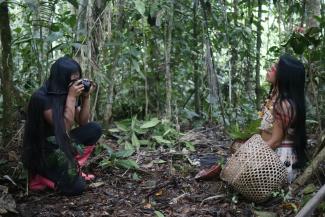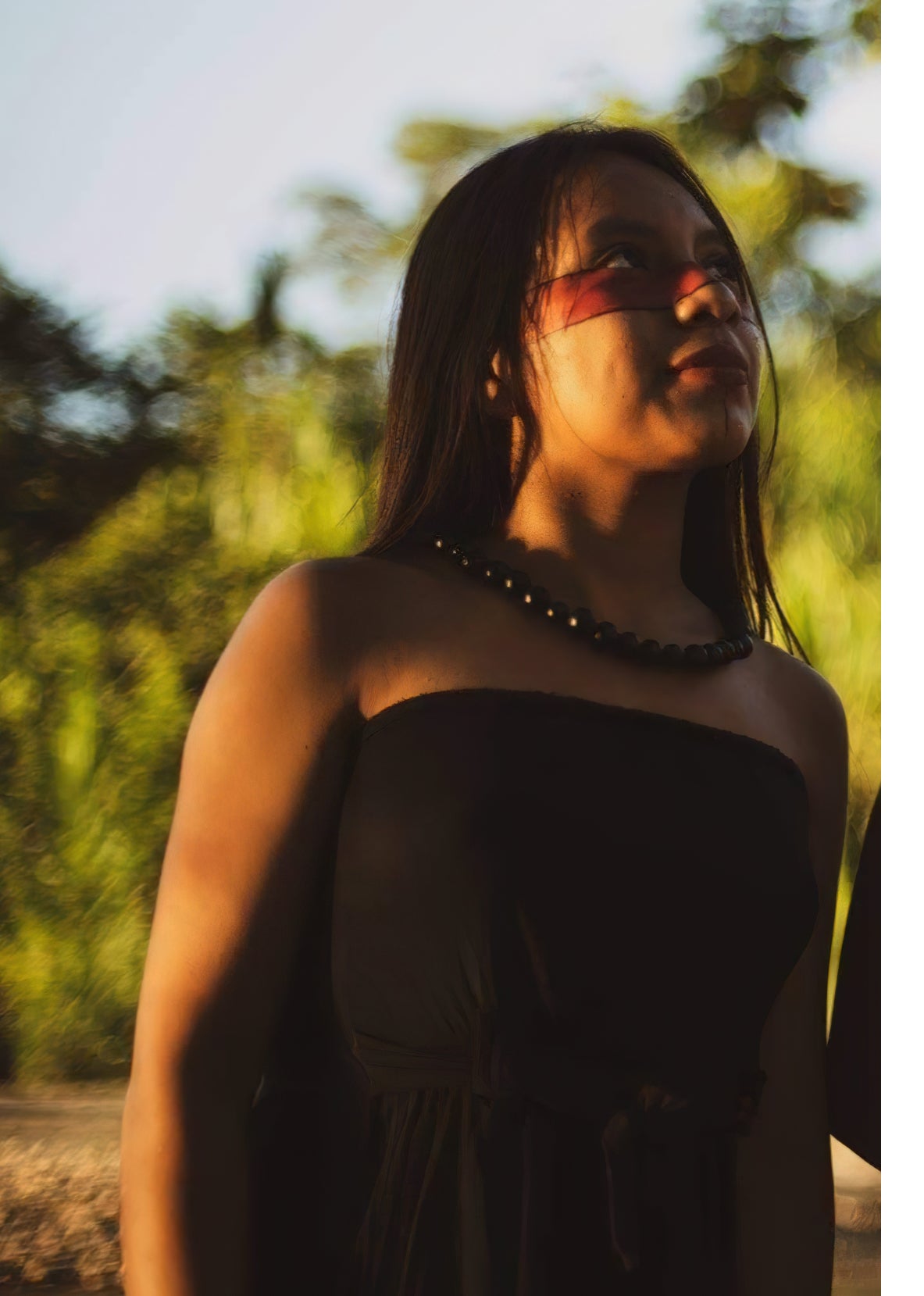
Ipiak Slendy Montanhuano Ushigua is a 15-year-old Sapara youth leader from the Llanachamaococha, Amazon community in the province of Pastaza, Ecuador, and a Cultural Survival youth fellow. She is a student at the Tsitsanu School, home to a group of fellows from the Cultural Survival Indigenous Community Media Youth Fellowship program. Their group fellowship project, “The Sapara Dream,” is focused on strengthening the Sapara culture, language, and competency in communication through workshops for youth in audiovisual production.
A community media center was built at the culmination of the fellowship, and now youth from the Llanchamacocha community have a space to produce, edit, and hold future workshops in continuing audiovisual skills and furthering the Sapara dream. Ushigua received training in creation of storyboards, audiovisual techniques, digital camera use, editing, and the importance of media as a platform for defending Sapara territory. “I am a youth who fights against natural resource extraction. I want to share with you the traditional medicine of my people. Our ancestors left us this medicine so that we can cure our children and other people who visit us," she said.
Traditional knowledge transfer is vital for strengthening future generations of Sapara Peoples, and Ushigua is a role model for young Indigenous women in promoting the culture and wisdom of her people, particularly in traditional medicine. “When I participated in the workshops, I learned a lot. I was able to share with my peers what I learned. It helped us a lot. It made me happy to be able to participate in video production; I really enjoy learning that kind of stuff. It was a memorable experience,” Ushigua said.

The Sapara Nation of Ecuador has been gravely impacted by oil extraction on its territory, and Llanchamacocha community members have been resisting the construction of a highway that would harm the ecosystem of the Amazon. Ushigua helped produce a series of short audiovisuals highlighting the importance of Indigenous identity, Sapara dreams, defense of territory, and ancestral medicine. The project helped create alliances with Cultural Survival and Tawna Films, which provided support during the project term with the defense of the Sapara territory. The fellows involved in the project are active leaders like Ushigua, who are working hard to strengthen and revitalize their cultural values, systems, and knowledge.
“The project caught my attention because communication is very important. Here, Sapara youth transmit messages to the world through community media. We have been fighting for many years; right now we are fighting against oil companies. We do not want our language, culture, identity, cosmovision, and stories to be lost. For this reason, I want to share with the world our way of living, our way of thinking. This has been an important goal for us through community media which has helped us,” Ushigua said. Storytelling through media has been a key element in the transmission of Indigenous cosmologies. The Fellowship has elevated this process by engaging youth to relate to their cultures, land, languages, and traditions through the use of technology.
Other fellows added, “We are very pleased to work with you and consider you allies of the Sapara Nation, of our territory where we are working to contextualize education to cultural reality. Continuing to work with you gives us the hope of advancing in communication from communities eager to show the processes of social transformation, the defense of the Amazon, and the Sapara culture that was declared an oral and intangible heritage of humanity by UNESCO in 2002.”
There is a saying, “En medio del mar verde se abre un camino de esperanza para este pueblo” (in the middle of the green sea there is a path of hope for the people). This path of hope motivates and strengthens the power youth have to make a difference, and Ushigua is a ripple in the middle of the green sea.
Cultural Survival’s Indigenous Community Media Youth Fellowship supports individuals and groups of youth ages 17 to 25 in their efforts to build their radio journalism and radio broadcasting skills through trainings, community radio visits and exchanges, radio production, and conference attendance. Since 2018, we have supported 33 Indigenous youth fellows in 10 countries.
--Nati Garcia (Maya Mam) is Cultural Survival Indigenous Youth Community Media Fellowship Coordinator.
Top photo: Ipiak Slendy Montanhuano Ushigua in action taking photos of a Tsitsanu student.
All photos courtesy of Tawna Films.
